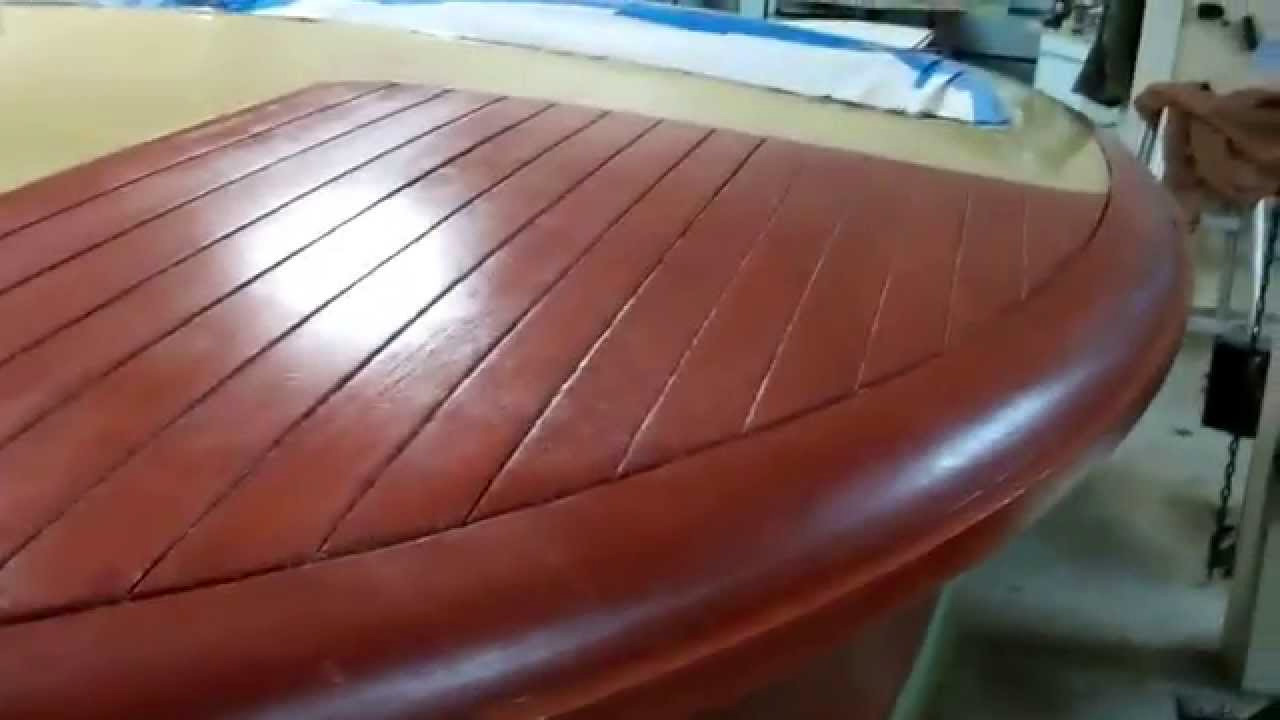As promised, here is the Riviera following applying the first coat of sealer. As I say in the clip, I have been engaged in lots of reading and research around issues of chemical incompatibility, during which a possible conflict between Interlux Interstain Wood Filler stain and CPES popped up several times.
Under “certain circumstances,” and especially if the stain is not fully cured, applying the CPES over the Interlux stain can cause the stain to lift and bubble.
Interlux recommends applying two coats of its Interprime Wood Sealer (1206 clear) over Interstain, so we are turning my Riviera into our guinea pig.
What I noticed first is a virtual complete absence of VOCs, unlike Smith’s CPES’s VOCS, which assault whoever is near it.
And, unlike CPES, which drags if the brush strays too far onto areas already soaked in the material, we were able to roll and tip Interprime using a 3” yellow foam roller and a chip brush without experiencing any drag.
Interlux explicitly stipulates no sanding between coats on anything but plywood, where we always sand between coats with CPES.
However, where we can safely recoat CPES, Interprime wants 16 hours at 77 F between coats. (No way do we keep the shop at 77F;
I am very pleased by how the Interprime caused the stain to blossom to the rich red mahogany hue we are after. CPES would not give us this result.
We will report again following tomorrow’s second coat.
Vintage Boat Preservation

